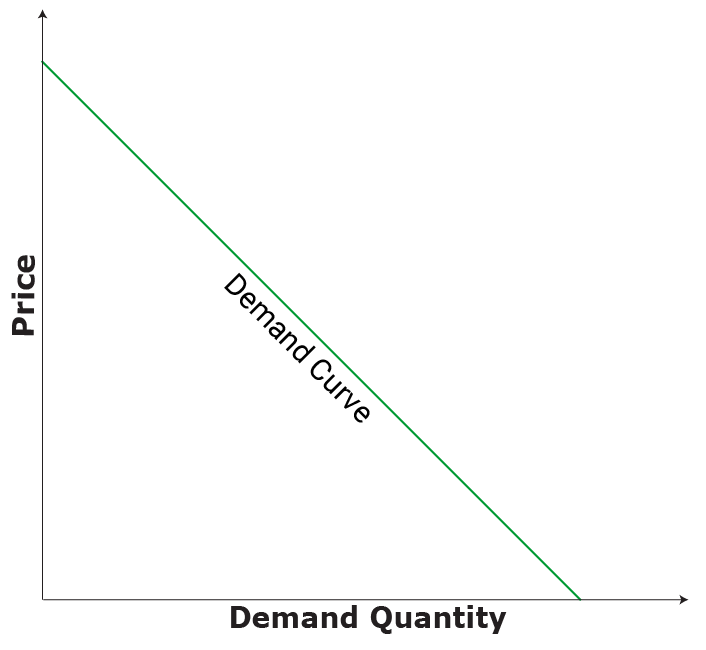- Demand Schedule - when prices decrease, the quantity increases
- Demand Curve :
- Demand is the quantities that people are willing and able to buy at various prices
- ex: when there are doughnut on sale and people really want them, even when prices go up, doughnut-lovers will still go out to buy them
- The Law of Demand - an inverse relationship between price and quantity demanded
- ex: P↑ Q↓ (price goes up, quantity goes down)
- ex: P↓ Q↑ (price goes down, quantity goes up)
- What causes a "change in quantity demanded"?
- ∆(change) in price
- What causes a "change in demand"?
- ∆ in buyer's taste -
- advertising
- ∆ in the number of buyers -
- population
- ∆ in income -
- normal goods - goods that buyers buy more of when income rises
- inferior goods - goods buyers buy less of when income rises
- ∆ in prices of related good -
- substitute goods - goods that serve roughly the same purpose
- complementary goods - goods that are often consumed together
- ∆ in expectations -
- what happens in the future
Elasticity of Demand:
- Elastic Demand - tells how drastically buyers will cut back or buy more of a particular good
- product that is elastic when demand will change drastically given a small price
- ex: wants for steak, a fur coat
- E > 1
- Inelastic Demand - a product is inelastic if demand will not ∆ regardless of price
- ex: needs for milk, gasoline, medicine (insulin)
- E < 1
- Unit Elastic -
- ex: salt
- E = 1
Let's say someone was selling cookies for $4 a dozen and was able to sell 50 dozens. This person increases the price to $6 a dozen and was able to sell 40 dozens. Here's how to find the Elasticity of Demand:
- % ∆ in quantity :
- (new quantity - old quantity) / old quantity
- ex: (40 - 50) / 50 = -.20
- % ∆ in price :
- (new price - old price) / old price
- ex: ($6 - $4) / $4 = .5
- Price Elasticity of Demand (PED) :
- -.2 / .5 = .4 , which makes it inelastic
- When calculating for PED, take the absolute value of the ∆Q's and ∆P's because E cannot be a negative number.

This comment has been removed by the author.
ReplyDeleteSorry I had to delete the comment. I wanted to edit it but couldn't figure it out, so I just posted a new one.
Deletethanks!
ReplyDeletei've made the font larger so that hopefully it will help you and everyone else who reads it in the future.
thanks for the criticism! :')
I like the design of your blog. It's very simple but pleasing and the colors are very calming. Your notes are organized and you even included an example of the elasticity of demand and how to work out the equation and numbers in order to figure out the final elasticity. Nice job c:
ReplyDeletethanks! i'm glad my blog was able to help you! :')
ReplyDeleteNice blog Trina :) I like the colors and the overall aesthetic you've created. I also like how you included graphs and examples for a lot of the material. For example, it helped me to understand elasticity when you wrote out the problem step by step and clearly plugged in the formulas to show how to work it out. However, if I were to give any criticism, it would be to make the font a little bit bigger. The text size is not that big of a problem but it is a little difficult for me to read personally. Otherwise, great job and keep up the great work!
ReplyDeleteOh and one more thing. I would like to add that when calculating for the PED, you must take the absolute value of the ∆Q's and ∆P's because E cannot be a negative number.
Deletethanks for the extra info.!
ReplyDeleteI'm glad that my blog was of help to you! :')